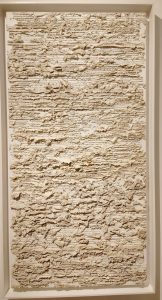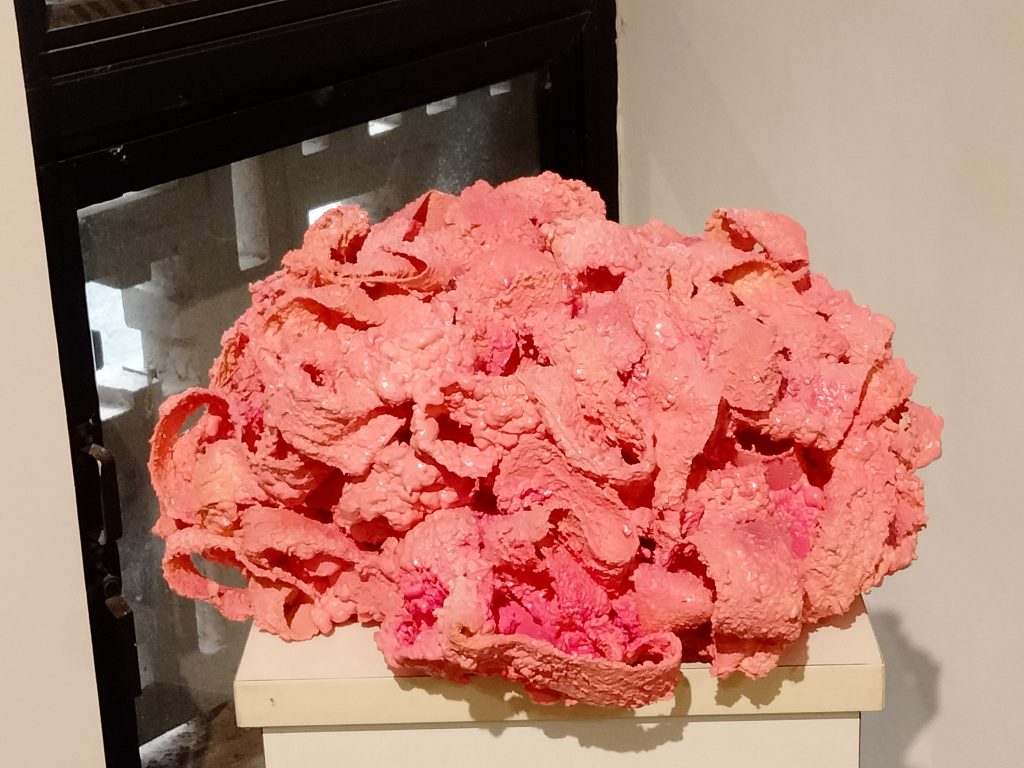Ved Prakash Bhardwaj
Satish Sharma’s painting and sculptures exhibition began on January 12 at Triveni Kala Sangam in Delhi. The exhibition, titled Marked Terrain, includes paintings as well as sculptures. He avoids using any kind of description or narrative in his artwork, which only enhances the viewing experience. The paintings and sculptures included in this exhibition are all abstract. That is why we do not find any clear and direct references in them. Although there are references in abstract art as well, Satish Sharma has them here too but they are secondary. Seeing and feeling is key in his art. In view of this, his paintings and sculptures emerge with a new vision. This vision takes the viewers to a world of experiences from where they can interact with art according to their experience.
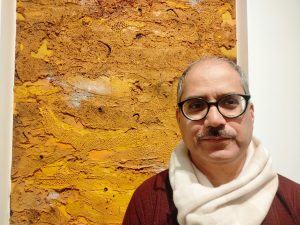
There is no visible story in Satish Sharma’s art, however, the way he creates images and crafts, the final form awakens our memories, and at the same time inspires us to understand the many forms we see in our surroundings. Even in the absence of any shape, textures and rough structures emerging on the surface bring forth the beauty of nature. Cracks, pits, and dislodged layers seen in the painting are some of the structures that can be called natural. The patterns created by the pressure of anything on the soil, the peeling of plaster on the walls, or the abstract formations created by the effects of weathering are trivial to see. But looking at them as a life process, they can be said to be an expression of the cycle of creation and immersion.
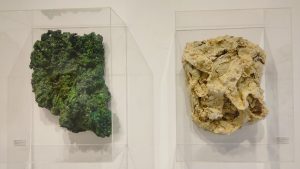
The creation process of Satish Sharma is such that it is not possible to imagine the final form in it. He allows the art material to act according to its character. He uses sand, marble dust, cement, etc. in oil colors and uses them on canvas or board. Metal wire has also been used in some places. Laying the canvas on the floor, he spreads the art material on it. In this process, some blank spaces are left somewhere, or the artists themselves leave some spaces blank. They also work in two-three layers. Sand or other such materials exhibit many different effects when dried. Satish Sharma lets them be as they are. Sayas creates some structures where he feels the need, whether it is markings to suggest paths or creating a pattern with the frequency of holes, but in doing so he makes no attempt to weave any kind of narrative.
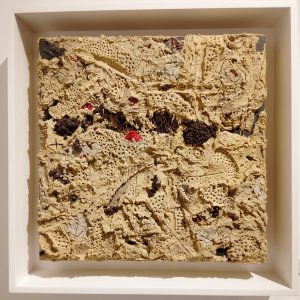
He says that my art is based only on visuals and only values the experience of viewing. I give priority to the content and the process of creating it rather than a concept or a story. The viewing process is more important for the artist. This process of seeing what is familiar or unfamiliar starts turning into joy. It is from here that a painting or a sculpture starts making a connection with the outer world as well as the inner world. Looking at the paintings and sculptures of Satish Sharma, it seems as if the artist is playing with the material, and he is welcoming the active role of the material in this play. Satish Sharma seems to limit his role after a stage in the composition process.
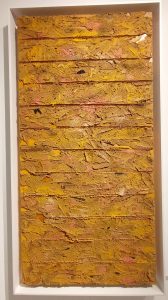
In the initial phase, Satish Sharma’s art was also confined to shapes. There was a story in them. Gradually, he started getting inclined toward the mystical aspects of life. Life and its philosophy started coming into his art. It was from here that the forms began to disappear from his canvas and in its place the unmarked world began to take center stage. There is more peace and stability in this world than in the previous world. Living in a busy and turbulent city like Delhi, he sought peace and stability through art. That’s why he found neglected worldly surfaces more attractive than human behavior. He writes in his statement that the simple, ordinary, worldly, almost neglected surfaces present in his surroundings attract my senses. Faded walls, cracks in walls, the bark of trees, the texture of soil and stones, patterns of leaves, animal skins, shapes of clouds, and other natural elements fascinate me. I enjoy these surfaces. The more I see, the more I feel. After this, a kind of relationship is established with them. There is a unique beauty in these surfaces, the beauty of the existence of creation, which is mysterious. In his art, Satish Sharma expresses this calm but mysterious feeling. Doing art is like meditation for him.
